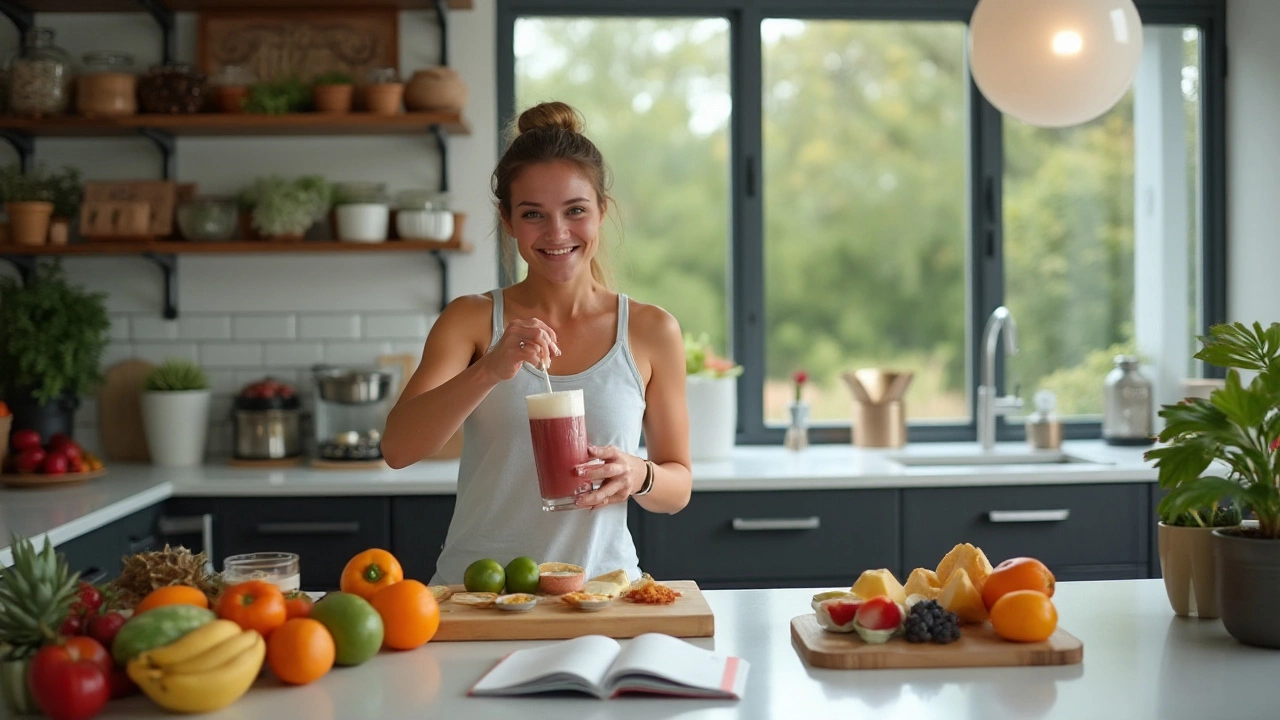Healthy Diet: Simple Steps to Eat Better Every Day
Ever feel stuck trying to figure out what to put on your plate? You’re not alone. A healthy diet isn’t about strict rules or fancy super‑foods – it’s about making small, smart choices that add up. Below you’ll find straightforward advice you can start using right now, whether you’re aiming to lose weight, feel more energetic, or just enjoy food without the guilt.
Building a Balanced Plate
The first thing to remember is balance. Think of your plate as a pie chart: half of it should be vegetables and fruits, a quarter protein, and the remaining quarter whole grains or starchy veggies. This visual makes it easy to spot gaps. For protein, go beyond chicken – try beans, tofu, eggs, or a handful of nuts. They keep you full longer and give your muscles the building blocks they need.
Veggies are the low‑calorie heroes of any diet. Aim for color variety: leafy greens, red peppers, orange carrots, and purple cabbage. The different pigments mean different antioxidants, which help your body fight inflammation. If fresh produce is pricey, frozen works just as well – just check the label for added sauces or salt.
Carbohydrates often get a bad rap, but they’re your body’s main fuel. Choose whole grains like brown rice, quinoa, or oats over refined white bread. Whole grains release energy slowly, keeping blood sugar steady and curbing cravings. A quick swap – replace a white‑flour tortilla with a whole‑grain one – can make a noticeable difference in how you feel after meals.
Meal Planning Hacks You Can Use Today
Planning doesn’t have to be a chore. Start with a weekly “theme” – for example, “Meatless Monday” or “Fish Friday.” This narrows down recipes and reduces decision fatigue. Spend 30 minutes on Sunday chopping veggies, cooking a batch of grains, and portioning protein. Store everything in clear containers so you can see what’s ready to grab.
Portion control is another simple trick. Use your hand as a guide: a palm‑size serving of protein, a fist of carbs, and two cupped‑handfuls of veggies. This method works whether you’re at home or eating out, because you don’t need a scale to stay on track.
Snacks can be the hidden culprits in a diet. Keep a stash of easy options like Greek yogurt, a piece of fruit, or roasted chickpeas. When you reach for something, you’ll already have a healthier choice at hand, which saves you from impulse purchases.
Hydration matters, too. Sometimes thirst masquerades as hunger. Aim for eight glasses of water a day, and add a slice of lemon or cucumber for flavor if plain water feels boring.
Finally, be kind to yourself. A healthy diet isn’t about perfection; it’s about consistency. If you enjoy a slice of pizza or a dessert, savor it mindfully and get back to your balanced meals afterward. That balanced mindset keeps you motivated and avoids the “all‑or‑nothing” trap.
By focusing on plate balance, smart planning, and simple habits, you’ll build a sustainable healthy diet that supports weight loss and overall wellness. Start with one change today, and watch how the rest falls into place.

Daily Protein Shakes: Benefits, Risks, and Best Practices
Maeve Larkspur Dec 31 0Protein shakes have become a staple in many people's diets, whether for muscle building, weight loss, or quick nutrition on the go. This article delves into whether drinking a protein shake every day is beneficial or harmful. It looks at the nutritional components of these shakes, their role in an active lifestyle, and tips on choosing the best options to complement your health goals.
More Detail